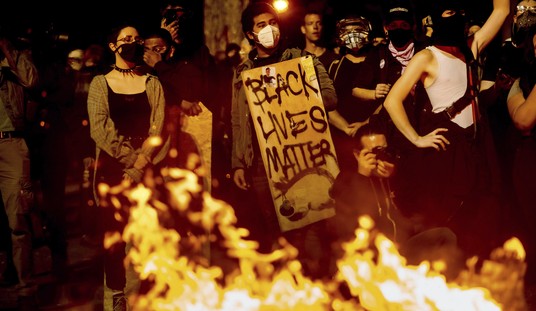Some delegates are requesting that we move to jazz hands rather than clapping, as it’s triggering anxiety. Please be mindful! #nuswomen15
— NUS Women’s Campaign (@nuswomcam) March 24, 2015
“The average of soldiers in the Allied divisions poised to cross the Channel” and storm the beaches on D-Day “was 25,” according to this book.
Flash-forward 70 years — to what Ashe Schow of the Washington Examiner ironically calls “The survivor class.” What happens when they graduate from the brutal front lines of college and enter the workforce?
In another recent example, New York Times opinion writer Judith Shulevitz described a special “safe space” at Brown University, a room with “cookies, coloring books, bubbles, Play-Doh, calming music, pillows, blankets and a video of frolicking puppies, as well as students and staff members trained to deal with trauma.”
Why is such infantilization of grown college students necessary? Because the students couldn’t handle hearing the opinions of writer Wendy McElroy, who was speaking on campus and criticizing the concept of “rape culture.” (McElroy’s views are not that far off from those of feminist former judge Nancy Gertner, I might add.)
The problem here is that these students are so unable to handle other views or adversity that they must be babied, whether that means mandatory hand-shaking or drawing with crayons.
* * * * * * *
This Survivor Class will be bringing their special brand of anxiety and demands into the workplace. One might joke that those likely outraged by things reasonable people would find mundane are also those most likely to major in Women’s Studies, but one cannot assume.
But first the Survivor Class will have prepare themselves for their job interviews. In 1953, British novelist L.P. Hartley wrote “The past is a foreign country: they do things differently there.” But even he had no idea how radically a culture could transform itself in just a few decades. Trigger warning; James Lileks spots a highly problematic “Pathé doc on the means by which oily beatniks were scrubbed down and converted into civilized women again” from 1963. “Amusing comment on the YouTube page: ‘We’re the beatniks looked down upon?’ It’s as if people think that ‘counterculture'” was admired and revered in its time. No:”
[jwplayer player=”1″ mediaid=”79593″]
This video would be considered a hate crime in today’s culture on both sides of the Atlantic. (Or perhaps not; after all, the Guardian is deeply concerned that “straight women who wear less-than-feminine clothing are ‘appropriating’ lesbian culture and making it too hard for lesbians to tell who the other lesbians are.”) Though given that in her formative state the girl in the video looks a bit like she’s auditing classes in the Chrissie Hynde school of grooming, it brings to mind this great headline found at Kathy Shaidle’s blog: ‘Punk Scientists Discover Fourth Chord.’
Serious question though: The TV series Mad Men gave us a look (albeit one that was flawed and often inaccurate) at what goes through the minds of 1960s Madison Avenue ad executives. American Sniper took us inside the mind of a crack 21st soldier. Between trigger warnings, privilege checking, jazz hands, uptwinkles, the Bletchley Park-level detections of racism, sexism, gender-ism, -ism, -ism, -ism everywhere, and a hundred other densely packed layers of carbonized horsesh*t, is there a book that takes us inside the worldview of contemporary college students and how they acquired their bizarre and often self-destructive worldview?
Update: And to bring this post full-circle:
Facebook is blocking this @FDRLST link on a story about the silliness of microagressions and trigger warnings http://t.co/oo3yznFmxj
— Sean Davis (@seanmdav) March 26, 2015










Join the conversation as a VIP Member